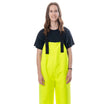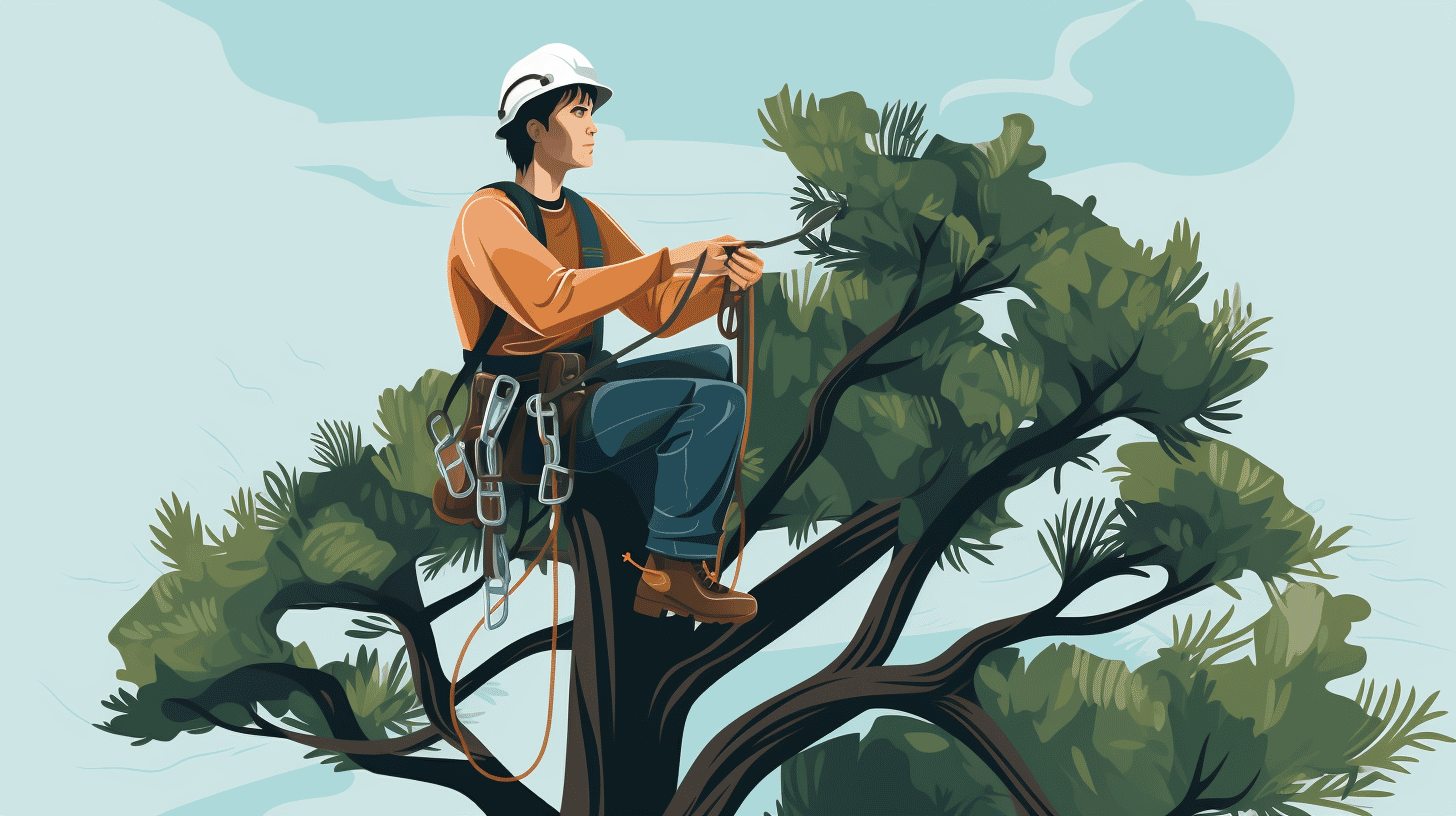Climbing towering trees, lugging heavy tree limbs, and handling harsh machinery are parts of a day’s work for an arborist. It’s a job where the risk of potential danger looms with every step they make. Regardless, the love for nature, resilience, and a keen vision for safety turns an arborist's potentially perilous day into a fulfilling, safe venture.
Speaking of safety, reliable arborist gear isn't just about making work comfortable. It's a vital investment that could make all the difference in a dangerous situation. It is essential that an arborist is equipped with the right type of safety gear to protect themselves while they’re reaching dizzying heights and managing the unpredictability of nature.
In this article, we'll delve into the challenges and risks an arborist encounters, compare these risks with those existent in other industries, analyze the financial implications of arborist injuries, and, most importantly, discuss investing in safety gear to ensure work done is as safe as possible. Let's delve into the world of arboricultural safety, and discover how valuable the appropriate gear can truly be!
Recognizing the Risks of Arborist Work
Despite the beauty and serenity associated with nature and tree care, the arborist profession comes with its fair share of hazards. While arborists are recognized for their vital role in maintaining and managing urban green spaces, they carry out their work under high risk and adverse conditions. In this article, we explore different arborist work dangers, keeping an eye on fatality categories, rates of injury, and incidents on the rise.
Fatal Incident Categories
Understanding the dangers that arborists face begins with identifying the types of incidents that typically result in fatalities.
- Contact with Objects or Equipment: The arborist's work requires the use of heavy machinery and sharp tools. Unsurprisingly, contact with objects or equipment stands as the leading cause of fatal incidents, accounting for about 43% of fatalities.
- Falls, Slips, and Trips: Given the heights at which arborists perform their work, they are at substantial risk of serious injury or death from falls, slips, and trips. This category contributes to 40% of fatal incidents, with climber falls and aerial-lift-operator falls being particularly common.
Fatality and Injury Rates
The likelihood of encountering danger in arborist work is not a mere assumption but is backed by statistics. The fatality rate for tree trimmers is alarmingly high, standing at 110 per 100,000. This risk factor points to a harsh reality of the profession.
The non-fatal injury rate is also telling, with 239 incidents reported per 10,000 workers. While these incidents may not cost lives, they often result in severe injuries that can affect these tree-care professionals' health and quality of life.
Increasing Incidents
Even more concerning is the pattern over time. The rates of incidents, both fatal and non-fatal, are on the rise. This uptrend poses significant concerns for arborist safety, suggesting that more stringent measures must be put into place to protect these essential workers.
As we appreciate the lush, beautiful trees around us, let's remember the arborists who work tirelessly, often under risky conditions, to upkeep these green spaces. Identifying and understanding these risks is the first step to championing their safety. Increased awareness, improved safety measures, and rigorous safety training for arborists can help mitigate these risks, ensuring that tree care doesn't come at the cost of valuable lives.
Growing Concerns in Tree-Related Work
When it comes to the bustling industry of tree-related work, matters are always growing - from lush green foliage to burgeoning issues of worker safety. While it's a field that's often overlooked, recent statistics are forcing us to turn our heads towards the canopy, concerned not just with heights workers have to scale, but also the steep rise in associated injuries and ailments. This section focuses on two specific areas of concern: work-related falls and nonfatal workplace injuries and illnesses.
Work-Related Falls
With increasing worldwide urban development and an undying love for greenery, the demand for tree-related work is at an all-time high. However, this growth has also corresponded with a troubling trend. Work-related falls to a lower level have seen an alarming 26% increase from 2011 to the recent data year. This indicates that despite progression in protective measures and training, the industry is grappling with a significant and complex problem.
It's essential to note that this number concerns falls and not merely accidents. The figures could bring to mind a montage of dramatic tumbles from towering heights, but a worker can suffer a harmful fall even from a supposedly safe distance off the ground. It underlines the need for stringent safety measures at all levels and at all times.
Nonfatal Workplace Injuries and Illnesses
As if the aforementioned concerns weren't unnerving enough, let's take a walk around another issue. Unfortunately, the stumble doesn't end at falls; the path of tree-related work is strewn with nonfatal, albeit painful and potentially debilitating, injuries and illnesses. As per the most recent data, 2022 saw a 7.5% increase from the previous year, with a total of 2.8 million incidents.
Minor incidents, you say? Consider the long-term effects of a bad back injury or continuous exposure to harmful biological factors related to tree work. Not all injuries are apparent or immediate. The health of workers may be silently, surreptitiously compromised, only to face serious consequences down the line.
Understanding the predicaments entailed with tree-related work is not merely a matter of numbers or isolated incidents. It's about an industry that literally goes out on a limb everyday, not knowing if the branch they stand on will hold or crumble. So, as the leaves grow in number, so should our efforts to ensure that those maintaining them are firmly grounded in safety.
Comparing Risks with Other Industries
The arduous life of an arborist or tree worker is packed with physical work, often conducted in challenging conditions and risky scenarios. Despite following the best safety and tree care practices, the tree care industry is stacked with hazardous risks. The staggering statistics report the potential hazards, injuries and fatalities experienced by tree workers, which accentuates the dangers when compared to other industries.
Tree workers encounter a diverse range of risks, from falling from immense heights, danger from falling branches, to life-threatening injuries from equipment like chainsaws. Unfortunately, this culminates in accidents being three times higher for arborists than it is for your average worker, according to U.S. Bureau of Labor Statistics data.
To shed some light on the severity of the plight of tree workers, here are some daunting facts:
- Arborists face 15 times more fatalities than other industries.
- Tree workers also endure three times more injuries when juxtaposed with other industries.
The discrepancy in the fatality and harm rates among tree workers and employees in other industries is both astounding and alarming. It clearly attests to the enormity of the tasks that arborists undertake, and the utmost care required to maintain their safety in their line of work.
This comparison indicates that more needs to be done to improve safety within the tree care industry. It might involve better education and training, enhanced regulations, or much-needed advancements in safety gear and equipment. Regardless, it resonates with a call for action from industry stakeholders to prioritize the well-being and safety of their workers in their everyday operations.
Financial Implication of Arborist Injuries
The arborist world is filled with diverse activities, from simple prunings to challenging tree removals, but these operations are never without their set of risks. Unforeseen accidents are a common occurrence, leading to financial implications that could be preventative with the appropriate precautions. In this section, we will unveil the weighty burden that arborist injuries can impose on the financial realm, with a particular emphasis on those related to chainsaw use.
Chainsaw-Related Injuries
Chainsaws are a fundamental instrument in an arborist's arsenal. They cut through the thickest of trunks and trim the most stubborn of branches. Yet, their usefulness is counterbalanced by their potential for causing severe injuries.
In the United States alone, over 36,000 chainsaw-related injuries are reported each year. The resulting medical costs are staggering, annually exceeding $350M. This figure only scratches the surface of the injury's financial impact, as it solely represents immediate medical expenses.
Here's a more in-depth look at the potential financial burdens posed by these injuries:
- Direct Medical Costs: This includes emergency room visits, hospital stays, medical procedures, medications, and so on.
- Indirect Costs: These encompass lost productivity from both the injured worker and fellow employees affected by the incident.
- Rehabilitation Cost: This entails the expenses for physical therapy required for the injured party to regain strength and functionality.
- Insurance Premium Increase: Businesses might also face an increase in insurance premiums following an outstanding incident rate.
- Legal Expenses: If the injured party opts to pursue legal action, the company could bear considerable legal fees.
"The implications of arborist injuries, especially those related to chainsaw use, can ripple far beyond the immediate hospital bill. The wider financial impact can be monumental, pushing businesses to the brink of financial distress."
This emphasizes the importance of investing in safety training and equipment for arborists. While the upfront cost may seem daunting, it is undoubtedly less than the potential cost of dealing with a severe injury. Through preventative measures, businesses can not only protect their employees but also safeguard their financial stability.
Investing in Safety Gear for Arborists
When it comes to an arborist's profession, the importance of safety can't be overstated. It's a tough field, one that carries with it an inherent risk factor due to the nature of the work. Hence, investing in top-notch safety gear becomes more than just a preventive measure—it's an absolute necessity. Safe and efficient working conditions are achieved not only through acquired professional skills and knowledge but also through the use of appropriate safety equipment.
Average Cost of Safety Gear
Decoding the budget for safety gear can be a bit daunting, especially if you're just starting in the industry. So what's the average cost of safety gear for arborists?
- The average cost of safety equipment and gear for arborists in the US ranges from $500 to $1,500.
While the initial outlay may seem steep, one must consider the long-term benefits and protection that these safety tools provide. Prevention from potential harm certainly outweighs the cost of an infrequent investment in safety gear for a profession such as this.
These costs can vary depending on the brand, the type of equipment, and the place of purchase. They also differ based on the specific needs of an individual arborist. For instance, some might need special Rain Gear for Work that is not only waterproof but also provides protection against potential damage from falling debris or sharp objects.
What’s undeniable, however, is the peace of mind that professional-grade safety gear brings. It ensures both physical protection and boosts self-confidence, allowing arborists to perform their tasks to the best of their ability without any added fear or anxiety.
Investing in safety gear is vital for arborists, and it pays off, proving its worth every time you step out on the job unscathed. So, gear up, invest wisely, and ensure your personal safety while working. The right gear prepared for any situation could mean the difference between a close call and a preventable tragedy.
Conclusion
Endeavoring for safety isn't merely a good intention; it's a full-blown commitment and even more so for arborists given the complex nature of their work. Wearing proper safety gear like chainsaw safety pants not only reduces the risk of injury but can also curtail fatal incidents.
A minor fault in one's gear can spell significant trouble, but investing wisely in high-quality equipment spells peace of mind. Rain Gear Pro understands this. They offer top-tier, Canadian-made chainsaw safety pants, adept at withstanding crotch blowout, offering optimal comfort alongside its unparalleled protection.
In the world of arboriculture, your safety gear is as much a tool as your chainsaw. It's not just about survival. It's about thriving, doing the job effectively, and going home unhurt at the end of the day. And that's why gear provided by companies like Rain Gear Pro becomes an invaluable asset. It's more than what you wear. It's your suit of armor, your friend that keeps you going, because life isn't merely about living; it's about living well.
Frequently Asked Questions
-
What safety gear is essential for arborists?
Essential safety gear for arborists includes a helmet, eye protection, hearing protection, gloves, chainsaw-resistant leg protection, and sturdy boots.
-
Is it necessary to wear a helmet as an arborist?
Yes, wearing a helmet is crucial for arborists as it protects the head from falling objects, low branches, and potential impact injuries.
-
What kind of eye protection should arborists use?
Arborists should use safety glasses or goggles that are rated for high impact and provide both eye protection and UV protection.
-
Why is hearing protection important for arborists?
Hearing protection is important for arborists as they often work with loud machinery and equipment that can cause long-term hearing damage.
-
What should arborists look for in chainsaw-resistant leg protection?
Arborists should look for leg protection that is specifically designed to resist chainsaw cuts, such as chainsaw chaps or pants with built-in chainsaw protection layers.





















Leave a comment
This site is protected by hCaptcha and the hCaptcha Privacy Policy and Terms of Service apply.